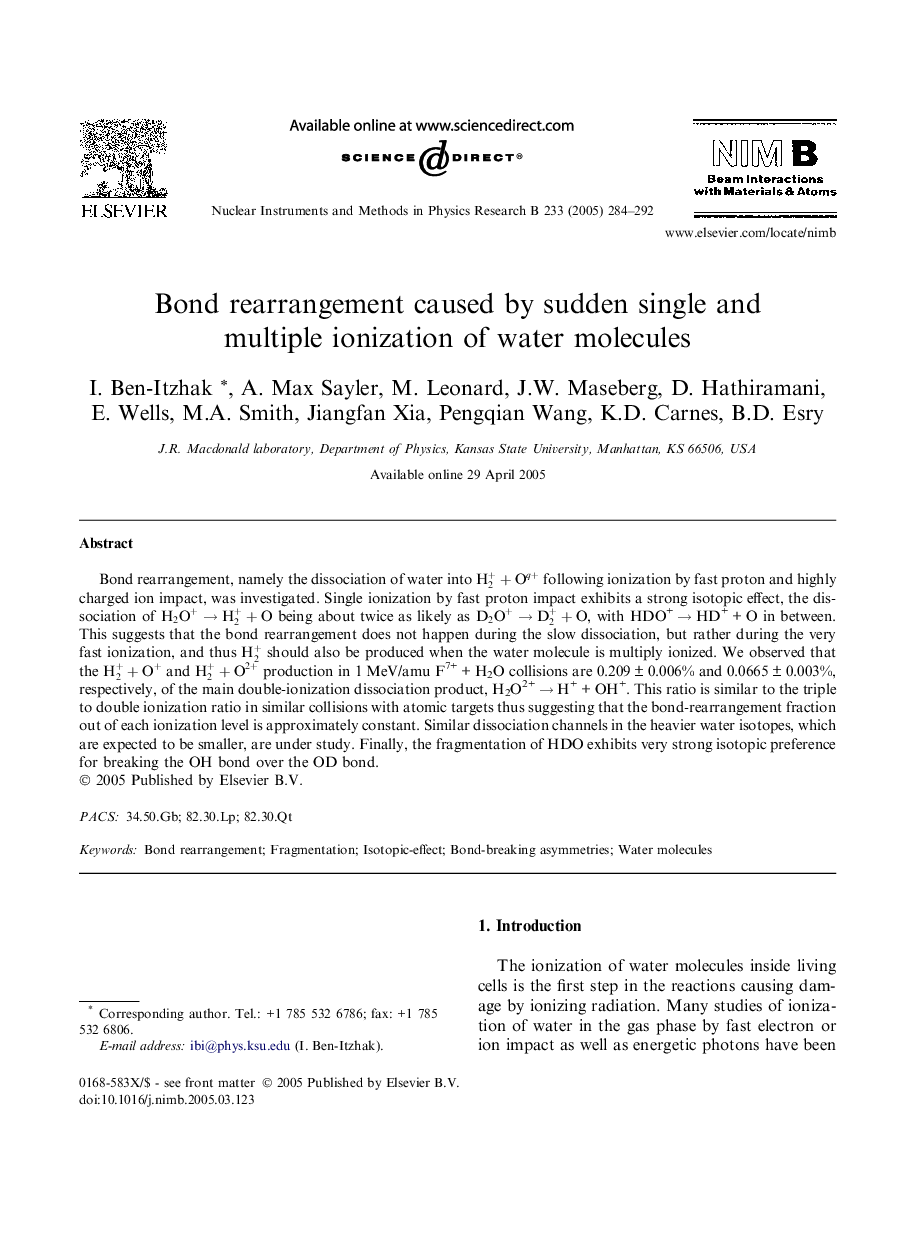| Article ID | Journal | Published Year | Pages | File Type |
|---|---|---|---|---|
| 9818067 | Nuclear Instruments and Methods in Physics Research Section B: Beam Interactions with Materials and Atoms | 2005 | 9 Pages |
Abstract
Bond rearrangement, namely the dissociation of water into H2++Oq+ following ionization by fast proton and highly charged ion impact, was investigated. Single ionization by fast proton impact exhibits a strong isotopic effect, the dissociation of H2O+âH2++O being about twice as likely as D2O+âD2++O, with HDO+ â HD+ + O in between. This suggests that the bond rearrangement does not happen during the slow dissociation, but rather during the very fast ionization, and thus H2+ should also be produced when the water molecule is multiply ionized. We observed that the H2++O+ and H2++O2+ production in 1 MeV/amu F7+ + H2O collisions are 0.209 ± 0.006% and 0.0665 ± 0.003%, respectively, of the main double-ionization dissociation product, H2O2+ â H+ + OH+. This ratio is similar to the triple to double ionization ratio in similar collisions with atomic targets thus suggesting that the bond-rearrangement fraction out of each ionization level is approximately constant. Similar dissociation channels in the heavier water isotopes, which are expected to be smaller, are under study. Finally, the fragmentation of HDO exhibits very strong isotopic preference for breaking the OH bond over the OD bond.
Related Topics
Physical Sciences and Engineering
Materials Science
Surfaces, Coatings and Films
Authors
I. Ben-Itzhak, A. Max Sayler, M. Leonard, J.W. Maseberg, D. Hathiramani, E. Wells, M.A. Smith, Jiangfan Xia, Pengqian Wang, K.D. Carnes, B.D. Esry,
